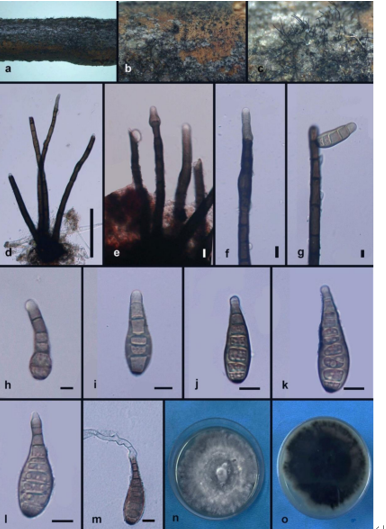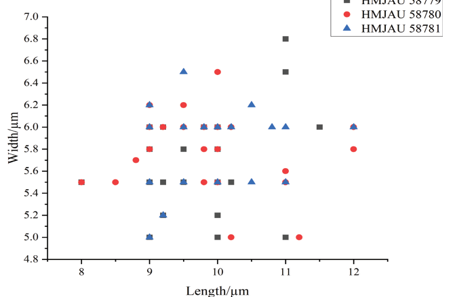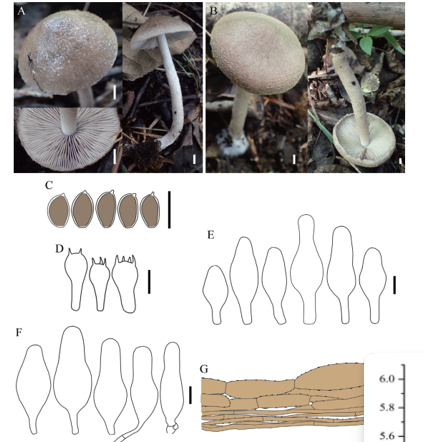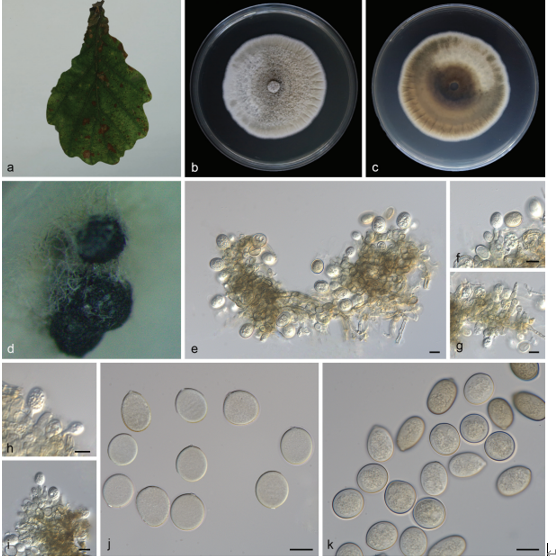Acrogenospora guttulatispora D.F. Bao, Z.L. Luo, K.D. Hyde & H.Y. Su, sp. nov. 2020
Index Fungorum number: IF 557597; Facesoffungi number: FoF 07982
Holotype: CHINA, Yunnan Province, Dali, Cangshan Mountain, on decaying wood submerged in Heilongxi stream, June 2013, Z.L. Luo. S-189 (MFLU 20–0289, holotype), ex-type culture, MFLUCC 17–1674 = ICMP 21772.
Morphological description
Saprobic on submerged decaying wood. Sexual morph: Undetermined. Asexual morph: Colonies effuse on natural substrate, hairy, dark brown. Mycelium mostly immersed, composed of septate, grayish brown, branched, smooth hyphae. Conidiophores 295–330 × 7.5–8.5 µm (x¯ = 312.7 × 8 µm, n = 15), mononematous, macronematous, solitary, erect, straight or slightly flexuous, cylindrical, indeterminate, unbranched, dark brown, paler toward apex, pale brown to hyaline at apex, septate, guttulate, smooth. Conidiogenous cells holoblastic, monoblastic, integrated, initially terminal, later becoming intercalary, cylindrical, smooth, pale brown, proliferating percurrently. Conidia 30–33.5 × 26.5–28 µm (x¯ = 34 × 27 µm, n = 30), acropleurogenous, solitary, spherical or subspherical, truncate at base, hyaline when young, dark brown when mature, aseptate, with a large guttule, smooth.
Habitat: on decaying wood submerged in Heilongxi stream.
Distribution: Yunnan Province, Dali, Cangshan Mountain,china.
GenBank Accession: LSU MT340730; RPB2 MT367157
Notes: Acrogenospora guttulatispora can be distinguished from other species by the large guttule in the conidia. In the phylogenetic analyses, A. guttulatispora is close to A. aquatica. However, the conidia of A. guttulatispora are spherical or subspherical with a large guttule, without a basal cell. While, those A. aquatica are subprolate to broadly ellipsoidal with a hyaline, globose to subglobose basal cell. In addition, there are 22 base pair differences in the RPB2 region between these two species.
Reference: Dan-Feng Ba1,2,3, Eric H. C. McKenzie4, D. Jayarama Bhat5 et al.
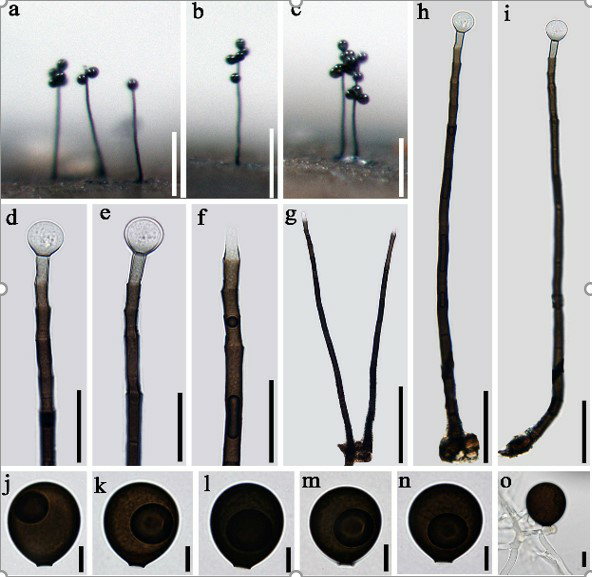
Acrogenospora guttulatispora. (MFLU 20–0289, holotype) (a-c) Colonies on wood. (d-f) Conidiogenous cells and conidia. (g-i) Conidiophores. (j-n) conidia. (o) Germinating conidium. Scale bars. (a-c)200µm. (d-f)30µm. (g)100µm. (h-i)50µm. (j-o)10µm.


